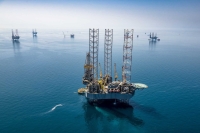
The Hasbah Field is an offshore field that includes some of the world's most productive gas platforms. It is named after a type of pearl, which is known by many names like Dana. Alongside the Arabiyah Field in the Arabian Gulf, located 150 km northeast of al-Jubayl Industrial City, they produce more than 40 percent of the non-associated gas from offshore fields, supplying it to the Wasit Gas Plant. Discovery of Hasbah field The Hasbah Field was discovered in 2008 and is the last field in t...
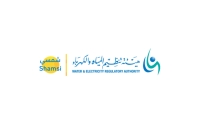
'Shamsi Gate' is a national electronic portal that enables consumers to understand the economic feasibility of installing a solar energy system in their establishment and connecting it to the public grid. It features an electronic calculator that analyzes all financial and technical aspects to calculate the cost of installing a solar energy system. Shamsi Gate was launched in 2021 by the Water and Electricity Regulatory Authority , following the completion of regulatory and technical ...
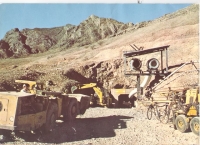
The numerous mines of the Kingdom of Saudi Arabia boast a wealth of basic minerals, which has made mining operations widespread across its lands. Among its most important mines are: Ad-Duwayhi mine It is the largest gold mine in production, located in Makkah al-Mukarramah Province . Production of the new mine commenced in 2016. It includes a Carbon-In-Leach processing facility. Mahd Ad-Dhahab Mine It is a historic gold mine dating back about three thousand years and located in al-Madinah al-Mun...
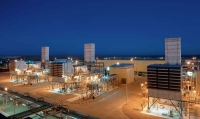
The Northern Borders Province, north of the Kingdom of Saudi Arabia, is home to the largest quantities of phosphate in the Kingdom, containing about 7 percent of the world's phosphate reserves. The Kingdom's phosphate reserves are estimated at around 2.7 billion t. Annually, the Kingdom produces approximately nine million t of raw phosphate and its products. The discovery of phosphate in the Kingdom dates back to 1983, in Hazem al-Jalamid, located about 147 km from the Governorate of ...
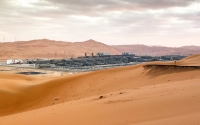
The Shaybah Oil Field is one of the large oil fields in the middle of ar-Rub' al-Khali (Empty Quarter) desert in the Kingdom of Saudi Arabia. The story of the field, located eight hundred km south of Dhahran, dates back to 1938 when a team from Saudi Aramco visited ar-Rub' al-Khali desert for the first time to explore the possibility of finding underground oil reserves there . Discovery of oil in Shaybah Field Oil was discovered in the Shaybah area during the drilling of the explorato...
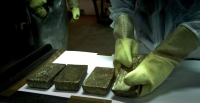
Mineral Resources in the Kingdom of Saudi Arabia are among the prominent economic sectors in the Kingdom and the third pillar of its national economy. The Kingdom's geological diversity provides a significant abundance of natural resources, placing it in the third rank among the top ten countries globally in natural resource reserves, valued at USD34.4 trillion. Additionally, its mineral resources are diverse, with forty-eight types of minerals, including fifteen that can be economically e...
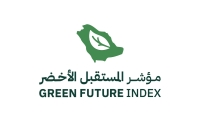
According to four indicators and four pillars, the Kingdom of Saudi Arabia has advanced in the Green Economy Index, issued by MIT Technology Review, which is affiliated with the Massachusetts Institute of Technology. This index, which began in 2021, evaluates the ability of seventy-six countries to develop a sustainable, low-emission future and measures their economic transition towards clean energy through investment in renewable energy, innovation, and green policies. The Kingdom jumped ten p...
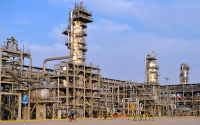
Ghawar Oil Field , the largest conventional oil field in the world, is located in Al-Ahsa Governorate in the Eastern Province of the Kingdom of Saudi Arabia , 100 km away from Dharan. The latter is the headquarters of the Saudi Arabian Oil Company ( Aramco ), which is the world's largest oil producing company, and the one accountable for all production and development in Ghawar Field. Production history of Ghawar Field The discovery of this field dates back to 1948, ten years after oil flo...
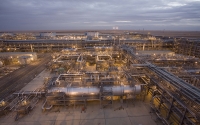
Khurais Oil Field , located in the Kingdom of Saudi Arabia, is adjacent to the world's largest oil field, the Ghawar oil Field, and produces an average of 1.2 million bbl of oil per day. The discovery date of the Khurais Field The Khurais Field was discovered in 1957, with a modest production not exceeding 190,000 bbl per day. By 1982, its production rate increased to three hundred thousand bbl per day through the addition of facilities for processing crude oil containing water. However, S...

Solar PV Cell and Module Manufacturing Plant and PV Reliability Laboratory is a plant for the production of solar panels and cells in the Kingdom of Saudi Arabia. It was established in 2010 by King Abdulaziz City for Science and Technology (KACST) . The plant-affiliated laboratory is the first internationally accredited laboratory to examine solar panel efficiency and reliability. His Royal Highness Prince Mohammed Bin Salman Bin Abdulaziz, crown prince and prime minister inaugurated the second...
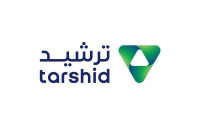
National Energy Efficiency Services Company 'Tarshid' is a national company owned by the Public Investment Fund. Launched in 2017, it aims to achieve strategic sustainability in the Kingdom of Saudi Arabia by optimizing energy consumption in the government and commercial sectors, establishing a high-quality energy efficiency industry, and reducing carbon emissions. Its headquarters are in the capital, Riyadh, and its service area extends across the regions of the Kingdom. Objectives o...
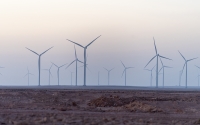
Clean Energy in the Kingdom of Saudi Arabia is one of the investment channels outlined in Saudi Vision 2030, aiming to add 9.5 GW of renewable energy in the first phase. It also aims to localize a significant portion of the renewable energy value chain, including steps, such as research, development, manufacturing, etc. Renewable energy in the Kingdom The Kingdom enjoys a distinctive geographic and climatic location that makes harnessing renewable energy sources economically viable and supporti...